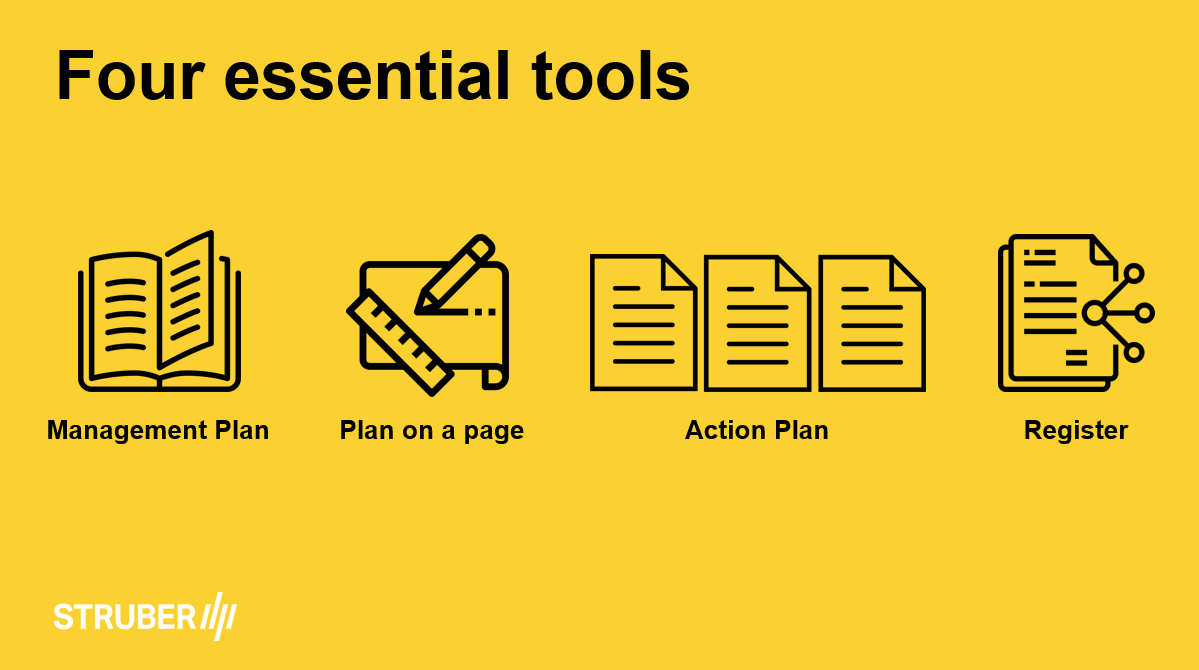
Four basic tools to set up project communications and engagement for success
14 May, 2019
The unprecedented infrastructure explosion in NSW and Victoria means there’s a stronger call for effective communications and engagement practitioners than ever before. Government and community expectations are higher; profitability for contractors is tighter; the cost of delivering projects is phenomenal.
Traditionally considered a ‘soft’ expense in project delivery, there can be a misconception that communications and engagement in big infrastructure amounts to door-knocking and party planning. Those of us who do it day-in and day-out know it requires strategy, planning, tools and adherence to an often-onerous client contract.
With focus in the right areas, and the tools in place to deliver clarity and reliability, communications and engagement can be the smoothest-running discipline across a project.

A management plan for overarching success
The ‘bible’ for a communications and engagement team is a strong management plan. There’s a glut of names, formats and iterations these can take, but if the words ‘communication’, ‘engagement’, ‘community’ and / or ‘stakeholders’ are the title, this is the document that becomes contractual once approved by the client.
When developing a management plan, review all relevant parts of the project contract. There’s often a section dedicated to communications and engagement, but it pays to read other parts too – sections relating to design, environmental management, industry participation and Indigenous engagement can contain requirements that should be included in the communications and engagement management plan.
A plan-on-a-page for everyday work
Once the management plan has been developed and approved, it’s a resource often relegated to the shelf until formal review-time rolls around. But it shouldn’t be forgotten.
An easy way to create a quick-reference version of an unwieldy plan is to turn it into a plan-on-a-page. Templates abound, but at base it should include the overarching goal, objectives, approach to creating success, stakeholder categories, methods of engagement, and evaluation techniques.
It’s a one-pager for the wall that anyone can see and refer to. In the thrust of major project delivery, it’s easy to get lost in the grass and dirt of every day engagement. A one-page plan on the wall is a great reminder to the team of the bigger picture and why they’re here.
Tools for action
Supporting the overarching management plan is an essential everyday tool of communications and engagement - the action plan. A two- or three-page document, an action plan is a ‘mini-bible’ to plan and prepare for communicating about specific project impacts, issues, elements and add-ons.
For example, if a tract of trees behind a previously-undisturbed row of houses will soon be cleared for heavy construction, an action plan is the ideal tool to prepare for clarifying the risks, mitigation, and communication activities so anyone can follow along.
An action plan should be able to be picked up and understood by any member of the project team, and should include:
- the goal of communicating
- objectives that are measurable and achievable
- a background brief to sum up the relevant history and context
- information about why works must occur, potential issues and mitigation techniques
It should specify any stakeholders likely to be affected by or influential in the works. For example, in the case of clearing behind homes, in addition to adjacent residents, it’s likely the local council, environmental and bird-watching groups in the area, and residents beyond those backing onto the trees would have a high level of interest and influence. Depending on significance of the trees, the media may be an essential stakeholder to consider.
The action plan should lay out key messages that deliver a consistent narrative about the works, issue or impact. It should include in a matrix the kinds of communication methods to be used, the dates they’ll be rolled out, distribution methods and audiences they’ll target. Communication materials to be used – like notification letters, fact sheets, media releases and website content - should be attached as appendices, ready for client approval.
Finally, the action plan should include a formal evaluation method to be rolled out during and post-implementation. Evaluation brings the process full circle, delivering a way for the project team and client to assess strengths, weaknesses and areas to improve for future plans.
To keep track of an action plan’s status in the development, approval and implementation process, action plans should be assigned a reference number. Particularly for large projects with many moving parts, there are likely to be lots of action plans in varying stages of development and implementation at any one time. Reference numbers are a safe system of making it clear between project team and client which action plan is being referred to in planning, discussions and reviews.
Track using a register
A simple approvals register is an effective way of tracking and monitoring where action plans and their supporting materials are at in the development, approvals and implementation process.
Even better – set up an approvals register using a shared document system, like Dropbox or SharePoint. This makes it truly live and allows the client to input information directly.
A register is an ideal way to track timeframes, which can sometimes be used as hold points or assessment measures through the project delivery process. It’s a fabulous tool for project teams and clients to hold each other accountable, create a sense of teamwork, and collaborate to get the job done.
These four tools are the basic bones to building a strong communication and engagement structure through project delivery. If they’re consistent, owned by the entire communications and engagement team, understood by the broader project delivery team, and used every day as essential tools of the trade, the communications and engagement function of a project will be structured, strategic, and as stress-free as possible.